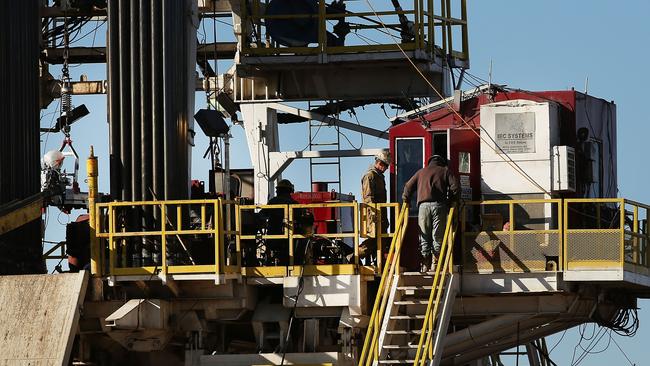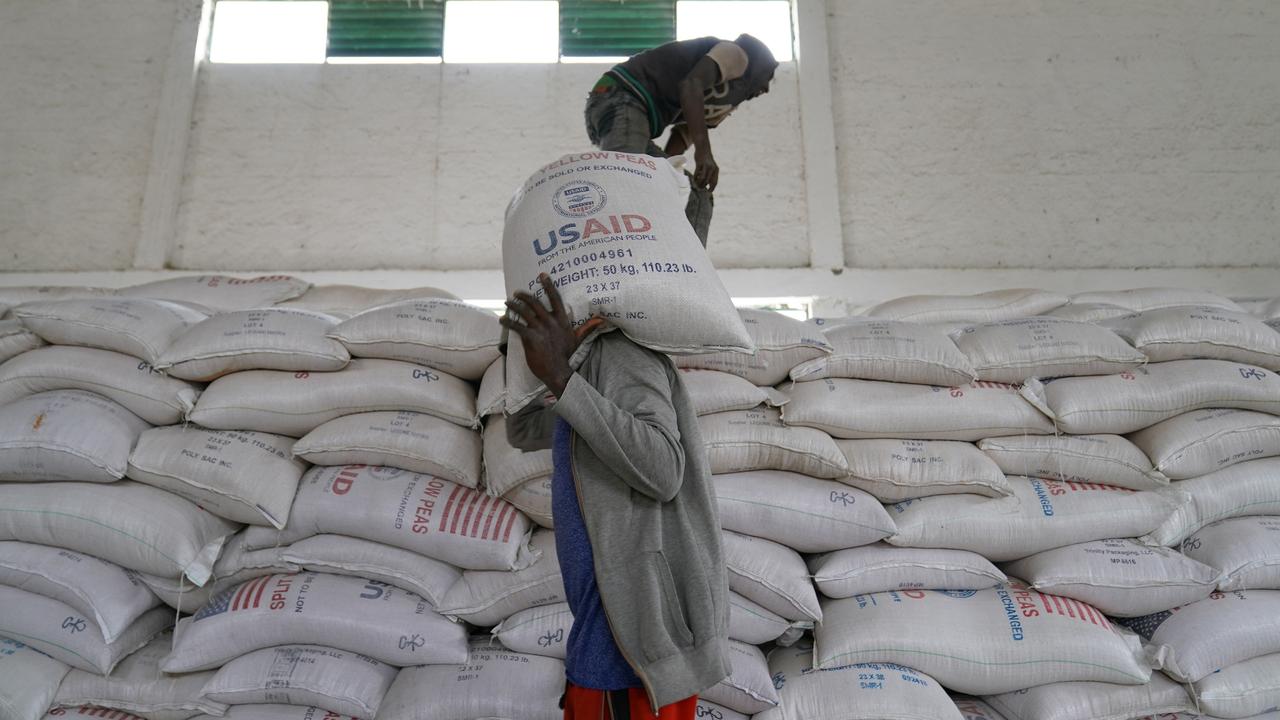Oil prices top $US100, yet some big US frackers let their production fall
Shale-oil producers return more cash to investors than is going toward drilling, in a reversal from industry’s boom years.

Oil prices are at their highest in years and politicians want companies to pump more. But most large American frackers are standing pat, or even letting production decline, and instead are handing investors cash.
Much of the US shale industry recently reported higher profits than in the same quarter a year earlier, but companies aren’t reinvesting more in production – indeed, some have let US output slip as they focus on paying investors. Nine of the largest US oil producers this week said they shelled out a combined $US9.4bn to shareholders via dividends and share repurchases in the first quarter, about 54% more than they invested in new oil developments.
Limited spending, supply-chain constraints and harsh winter weather in some regions, analysts said, took a toll on shale production, which has increased only modestly so far this year. Some producers, including Pioneer Natural Resources, Marathon Oil, APA, formerly known as Apache, and Devon Energy, reported drops in their domestic oil output from the prior quarter, down between 2% to 8%.
That some of the largest shale companies allowed production to slip amid the highest oil prices in years shows the extent to which the industry has adopted restraints on spending and made substantial growth in domestic output far less feasible than it was the last time oil prices topped $US100 a barrel.
Even as Biden administration officials have urged shale executives to pump more to help ease high gasoline prices, most reporting earnings this past week said they wouldn’t alter spending plans in pursuit of growth, touting low rates of reinvestment in oil and dividend yields higher than most in the S&P 500 index. Marathon said it will spend about 8% more this year due to inflation if oil prices stay elevated, but indicated that is only a function of the current market environment.
“We are not adding any growth capital due to higher prices,” Marathon chief executive Lee Tillman told investors this week. “We are staying disciplined.”
Marathon, which has seen its stock price jump about 67% from the start of this year, said its first-quarter US oil production was down about 8% from the prior three-month period. Pioneer’s output was down about 2%, adjusting for a divestiture. Coterra Energy, the company formed by the merger of Cimarex Energy and Cabot Oil & Gas, was about 6% lower.
It wasn’t a regional phenomenon. Devon, which said its US oil production was off about 4% from the previous quarter, noted small output declines in the Delaware Basin, its largest asset and part of the Permian basin, as well as in the Bakken Shale in North Dakota, the Eagle Ford in South Texas and the Powder River Basin in Wisconsin.
Arun Jayaram, an analyst at JPMorgan Chase, said oil companies typically invest less capital at the end of a year, meaning production growth is often less robust in the early part of the following year. But seasonal factors alone cannot explain why some companies saw output decline: Delays in getting equipment to well sites, labour shortfalls and the shale industry’s new-found frugality all have played a role in companies’ subdued response to high oil prices.
“Historically, this industry has reacted to the commodity price,” Mr Jayaram said. “Now, they’re sitting on their hands.” Investors have rewarded companies that have taken a steadier approach on spending, and most have. The S&P 500 energy sector is up about 45% this year, whereas the broader index has dropped about 14%. Investors are also attracted by the industry’s growing payouts to shareholders.
Coterra told investors that $US663m of its $US961m in free cash flow in the first quarter went to shareholders via dividends and share buybacks. Pioneer said 88% of its free cash flow in the period went to shareholders. Marathon said its reinvestment rate in the oil business was only 27%.
Meanwhile, in private conversations, administration officials have expressed frustration to shale executives about their companies’ unwillingness to substantially boost oil production this year, as consumers pay the highest fuel prices in years.
In an interview with the Atlantic Council in March, Amos Hochstein, President Biden’s co-ordinator for energy security, said some large oil companies such as Chevron have signalled spending and production increases in the US, but others have baulked at committing to increased drilling at almost any oil price because their investors resist such a move “under the excuse of fiscal responsibility or fiscal discipline.”
“At these prices and the current environment, there’s no doubt that I believe that we can see additional investment and additional production coming online,” Mr Hochstein said.
The Energy Information Administration expects US oil production to grow by about 1 million barrels a day this year, but output so far has been relatively flat. Domestic production was 11.9 million barrels a day in April, up about 2.5% from earlier this year, according to the EIA.
Pioneer Chief Executive Scott Sheffield told investors he expects US oil production to increase by at most 600,000 barrels a day this year, and that the EIA and other analysts that predict a gain of 1 million barrels are over-estimating what shale companies can do within their current constraints.
“We’re not doing what we’ve done before, which is getting really good at oversupplying the market and essentially crashing prices,” said Clay Gaspar, Devon’s chief operating officer.
Efforts to boost production would just accelerate cost inflation for oilfield equipment, steel and labour, eating into profits that companies are supposed to send to shareholders, executives said.
Prices for various equipment have risen 15% or more for companies that have steadied activity levels, but more aggressive producers would likely see prices for drilling rigs 40% to 50% above last year if they attempted to substantially grow production, Mr Gaspar said. “That’s where your margins really start to erode.”
The Wall Street Journal


